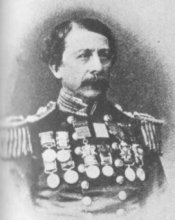-
Posts
220 -
Joined
-
Last visited
-
Days Won
11
Content Type
Profiles
Forums
Blogs
Gallery
Events
Store
Everything posted by POWCollector
-
Up Next is a very standard South African grouping but the story is great. Hermanus Johannes Fouche Venter (What a name!) was born on the 11th of August 1911. Before the war, he was employed by South African Rail as a ticket checker. His private address was in Durban. On the outbreak of war in September 1939, Hermanus enlisted as a Private in the 2nd Battalion, Royal Durban Light Infantry which was part of the 2nd Division. Like so many, Hermanus was captured on the 21st of June 1942 at Tobruk. Hermanus was sent to Italy and arrived at PG 82 at Laterina near Arezzo on the 6th of August 1942. The camp was organised into huts about 40 yards long and 8 yards wide. The bunk beds were in blocks of nine, three on top, three in the middle and three on the bottom of one structure. Not very comfortable or private! There were limited rations in the camp but prisoners were issued one red cross parcel each a week. On the 8th of August 1943, Italy capitulated and the prisoners were free men. However, British high command gave the infamous 'Stay Put' order which was very costly and cost a lot of men their freedom for a couple more years and in some cases, this cost them their lives. On the 10th of August the prisoners of Laterina were called to the parade ground where the Camp Commandant told the prisoners that the Italians had signed a surrender two days earlier. The local population came down to the camp with lots of wine and big celebrations were held. However that night, a local farmer came down to the camp to warn that the Germans were on the way to recapture and entrain all of the Prisoners. The senior officer of the camp decided to ignore the stay put order and let everybody loose to try and find freedom by heading south to join the allied advance, or to head north towards Switzerland. 8000 Allied Prisoners left Camp 82 to try and reach freedom, however 4000 were recaptured and entrained to Germany. Sadly, Hermanus was one of those who was recaptured and sent to Germany. On the 16th of September, Hermanus was put onto a train bound for the Fatherland. On the 20th of September, Hermanus reached his new home at Stalag 8C at Sagan, adjacent to the infamous Stalag Luft 3, the scene of the wooden horse and the great escape. On the 6th of February 1944, Hermanus was transferred again to Stalag 8A at Gorlitz on the German/Polish border. During his time as a prisoner of war in Germany, Hermanus was employed on 3 different working camps. Firstly he was sent to a Sugar Factory in Breslau, next he was sent to Kuhlfort to work in a coal mine and lastly, when he was transferred to Stalag 8A he was employed in a paper factory at Wartha-Frankenberg. Under the sabotage section, he wrote that the Germans considered working slowly and doing very little as sabotage but this is was a method of Sabotage that he and many others adopted. On the 15th of February, the prisoners gathered everything the could carry and prepared for the infamous forced march. The rations were 1 loaf of bread between two men, and 1 tin of meat was to be shared between 10. It seems Hermanus had had enough of the marching and meagre rations as his prisoner of war report says that he was held captive until the 26th of March 1945. He must have escaped the march and headed towards the Allied lines. On his report, Hermanus stated that he did not receive adequate medical attention when it was needed. Also, on MI9 ex-pow debrief reports, there is a section about war crimes which was filled out on a different sheet and sent to a different department. Hermanus did fill out this form which was known as 'Form Q' and i am working on getting hold of it. Hopefully it will turn up another interesting story! He was interviewed about his time as a P.O.W on the 2nd of May 1945 and he was discharged on the 7th of October 1945. Apologies for the weird formatting on the last post! I literally have no idea what happened but i cant seem to be able to change it!!
-
Next up is a group I can do very little research on sadly, but I might contact the Royal Artillery Museum and see if they could assist me. These are the awards of 991780 Gnr Maclean Suttie of the Royal Artillery. He was from Dundee and had a twin who was also in the forces during the war. His brother, Gordon McKinnon Suttie was awarded the Distinguished Flying Cross for his service with 635 Squadron, R.A.F.V.R. Maclean served in the North African campaign with the 8th Army but was at some point captured. He would have been held in Italy first but I don't have access to the Italy POW roll (If anybody could assist me I would be very grateful!) He eventually was held as Prisoner No. 226903 at Stalag 4b at Muhlberg in Saxony, Germany. This camp was liberated by the Red Army on the 23rd of April 1945. Maclean Suttie was discharged on the 3rd of January 1946.
-
My latest acquisition is the medals awarded to 4338343 Corporal. S. Aston. Durham Light Infantry. Samuel Aston was born on the 1st of August 1901 was from Walston street, Middlestone Moor, nr. Spennymoor, County Durham. He enlisted into the 6th Battalion, Durham Light Infantry on the 10th of July 1938 and at the time of enlistment he was working as a handyman. Samuel went out with the 6th Durham Light Infantry as part of the British Expeditionary Force in 1940. He was captured whilst serving in the 51st Division at Cromberg in Belgium on the 28th of May 1940. Samuel was marched and entrained to Stalag 8b at Lamsdorf in Poland and arrived here on the 7th of June 1940. From the 20th of June 1940 to October 1940, Samuel was sent to an ArbeitsKommando and was employed with sand labouring. From here, Samuel was sent to a different working camp from November 1940 to September 1942 and this time was employed doing tailoring work. In September 1942, Samuel Aston was sent to Stalag 383 at Hohenfels in Bavaria, Germany. Stalag 383 was probably the nicest prisoner of war camp to be in, as there were no work details you could do as you wished with your spare time. Many Prisoners got qualifications and got better read in the library. One New Zealand Prisoner even got his diploma qualification from the British Bee Keeping Society whilst staying here! Some prisoners of kept pets whilst at Stalag 383. Despite the comparatively nice conditions at Stalag 383, there was a thriving escape community and as Arthur had spent the last two years as a Tailor, it wouldnt surprise me if he had been involved in making escape kits! Sadly this is not on his POW debrief so i dont think we will ever have written confirmation. Cpl Samuel Aston was liberated on the 17th of April 1945 and was interviewed by MI9 on the 15th of May 1945. Samuel Aston spent very nearly 5 years of his life as a prisoner of war and when he arrived home, would have been nearly 44 years old.
-
Thanks Tony! Yes the RAF/Army group is very interesting indeed! It took a lot of time to get the story figured out due to the name change! I also really like the Battle of Britain group as i find it fascinating that he was never heard of again and the true story of what happened to him will probably never be known! What a great find! Ive started using find my past too and i am impressed! They have a lot of very interesting records and often reference where in the national archives certain files are too which is very useful!
-
Next up is a group I bid on at auction unsuccessfully last year (March 2015) which i was really sad about missing out on and to my surprise I saw the group on ebay for less than what I was bidding at the auction. I put a bid on and got the group for £80 less than they sold for! Jasper Johnson was born on the 19th of February 1920 in Bakewell, Derbyshire. On the 14th of January 1939, he enlisted into the 1st Battalion of the Sherwood Foresters. He was a lorry drivers mate at the time of enlistment. He went out to Palestine with the Battalion on the 3rd of August 1939 and therefore qualified for the General Service Medal with bar Palestine. (This is missing from the group and if anybody see's it or knows of its whereabouts, please let me know!) In June 1940, the 1st Battalion moved to reinforce the Garrison of Cyprus where they suffered their first war casualties in an air raid. In early 1942, the Battalion moved out to Egypt and converted to a motorized role and joined the 201st Guards Brigade. Unfortunately, after a sharp engagement in the Knightsbridge box, the Battalion was ordered to surrender when the Garrison in Tobruk capitulated. On the 21st of June 1942, Private J Johnson tried to escape but was captured by a German patrol as he attempted to break through the perimeter. He was sent to 3 different Prisoner Of War camps in Italy being employed on Farms. When the Italians capitulated on the 9th of September 1943, Jasper Johnson was being held at Campo 63 which was at Marinaro Aversa Near Arezzo. This camp was mostly holding Indian troops captured in North Africa so this group is quite scarce! The Sergeant in charge of the camp, ignored the infamous 'Stay Put' order which resulted in so many being recaptured and entrained for Germany. Jasper had been working on a farm and had made friends with the local farm workers. After the armistice, he left the camp and headed for the Farm. He stayed here until the 21st of September 1943. On the 22nd, another farm worker acted as a guide and took him by train to Tirano from which he set off on foot. He began to walk over the mountains to Switzerland. He got lost on the mountains but he met an Italian woman also trying to flee into Switzerland. They camped on the mountains and crossed into Switzerland the next day on the 23rd of September 1943. He was repatriated from Switzerland and returned home on the 22nd of October 1944. On the 12th of June 1945, he married Muriel Beverley in Sheffield and was Demobbed on the 27th of July 1946 as a Class Z reservist. As is common with second world war Prisoners of War who were reservists, Jasper was again called up to serve with the Army in 1950. This time, he was serving with the Royal Northumberland Fusiliers. On the 10th of October 1950, Jasper landed in Korea. The Royal Northumberland Regiment fought at Sibyon-ni, Kan-don, the Imjin River and finally at the Battle for Point 217. During their tour in Korea, the regiment lost 93 killed, 279 wounded and 45 Prisoners. Luckily, Jasper Johnson was not amongst these and left Korea on Sunday the 29th of October 1951 on-board His Majesty's Troopship 'Empire Pride'. For the second time, he was demobbed as a Class Z Reservist on the 23rd of November 1951. Jasper Johnson clearly had a very eventful time with the army and got to travel all over the world. He passed away in December 1984, aged 64.
-
Up Next is a group i have spent the last couple of months researching. Indraseen Pydaah Murty was born in Darlington, Yorkshire on the 13th of November 1921. He attended the Barnard Castle Boarding school. Just after the war, Indraseen changed his name to Robert and was known as Bob so from now on, i will refer to him as Bob. At the time of enlistment he was a Journalist living in Berkshire. Bob joined the territorial army on the 24th of May 1939 and when war broke out, he was called up to serve with the West Yorkshire Regiment. Bob was sent over to France with the regiment in 1940 but his regiment was driven back to the sea at Dunkirk by German forces. Bob was one of the lucky ones who was able to escape back to England. Back in England in 1941, Bob asked to transfer to the Royal Air Force and volunteered for aircrew training. After initial training in England, he was sent to Pensacola Florida for Observor/Navigator training. He thoroughly enjoyed his time across the pond. He very much admired the training ability of the instructors. He was sent back to England and joined 77 Squadron as a Sgt Navigator. He took part in a number of operations but on the 23/24th of September 1943 whilst on an operation against Mannheim, he was shot down and had to bale out. Sadly, he was one of only 3 of the 7 crew to survive. He injured his back as he descended by parachute and hit a tree. Bob recalled later saying "I came down over the target area of Mannheim and as dawn was breaking, to avoid meeting angry civilians, i hid up a tree and hid there all day. The next day, i climbed down and started walking. I came to in a forest and because i was so tired i rested by a tree and fell into a deep sleep. I woke to see a forester standing over me with a big axe and for me the war was over. Bob was taken to Dulag Luft at Frankfurt and held here in solitary confinement for 7 days. Here he was interview by a woman who 'claimed to be from the International Red Cross'. Bob was held at Dulag Luft, Stalag Luft 6 at Hydekrug, Stalag 357 Thorn, and Stalag 357 Fallingbostel. As the Russians and British forces closed in, Stalag 357 was evacuated and on the 6th of April, the prisoners were marched out of the camp. On the 18th of April, Bob took his opportunity and made his escape from the marching column. This was lucky timing as on the 19th, The column was accidentally strafed by British and American Planes resulting in a lot of casualties. Bob was interviewed about his time as a P.O.W on the 26th of April 1945 by now a Warrant Officer. Under the section of medical care, he reported that he had not received adequate treatment for the injury to his spine, an injury which would affect him for the rest of his life. The rest of the column was liberated on the 2nd of May 1945. After the war, Bob changed his name and applied to join the caterpillar club. He returned to Journalism and ended up as the editor of the Daily Mail. Bob died in 1999. I am sure that this grouping is unique, A half indian who served on the beaches of Dunkirk as a soldier, was shot down as an RAF navigator and then escaped and made his way to the british lines. A fantastic group which i am thrilled to own! I dont have time to upload the pictures tonight, but i will do tomorrow when i have a chance!
-
Next up is a very sad and interesting story to a young Hurricane Pilot. Kenneth Barton Smith was born on the 29th of May 1919 in Bromley and was educated in Tonbridge, Kent. He then went to Wintringham Grammar School in Grimsby where his family was then living. In 1936, he moved to London and started working for an insurance company. On the 14th of August 1939, he joined the Royal Air Force Volunteer Reserve. On the 1st of September 1939, Kenneth was called up and started his training. On the 20th of May, 1940 his training ended and he joined 257 Squadron on the 22nd. The squadron, based in Hendon, was supposed to have Spitfires but instead was given Hurricanes. On the 8th of August 1940, 257 Squadron were on Convoy Escorts in the Channel and as Kenneth was piloting Hurricane R4094 off of St. Catherine's Point. He never returned from this sortie. Kenneth is believed to have been shot down and crashed/bailed out into the Channel. On the 10th of August, Lord Haw-Haw announced Sgt Kenneth Barton Smith's name and address as being a prisoner of war. He was never heard of again. Sadly, I doubt it will ever be known what happened to Kenneth, perhaps he was brutally interrogated about the the RAF plans, locations, strength etc and didnt co-operate? perhaps he was wounded when taken prisoner and died of these wounds? A sad story made worse for his family who must have been overjoyed to hear the new that Kenneth was a Prisoner but then to never hear a word again. It must have been terrible. Kenneth Barton Smith was just 21 years old when he died, and he is remembered on the Runnymede Memorial to the Missing. Pictured below are the condolence slip named to Flight Sergeant K.B Smith, the 1939-45 Star with replacement Battle Of Britain bar, Air Crew Europe Star and 1939-45 war medal.
-
Next is a group, the likes of which I have always dreamed of owning! Part of a series of Birthday Presents to myself!! This will be a long post! John Edward Jenkins joined the Territorial Army as a Sapper in the Royal Engineers in 1937. In 1940, He was selected for Officer Training and was granted a commission in April 1941. He was posted out to India in June 1941 and then From October 1941 to June 1942 he served in North Africa. He was Captured in Tobruk and this is where the story gets interesting! John was taken to Campo 21 at Chieti, Italy. Campo 21 was an officers POW camp which was originally a Monastery. It was a very rough camp indeed but the morale was extraordinarily high given the circumstances. John was a very active prisoner being heavily involved in the Camp Theatre and also the Escape Committee! In 2014, Brian Lett published a book well worth a read called 'An Extraordinary Italian Imprisonment' which is all about those who were imprisoned in Campo 21 Chieti. In this book, John Jenkins is mentioned countless times. As it transpires, Johns Original Diary kept as a prisoner is kept in the National Archives and this is where Brian Lett got his information. The Dramatic Society was a big part of life at Chieti. The society decided to put on a special show for the 21 Club. It was to be a cabaret in a simulated nightclub. Handbills were created and tickets were issued per table of 5 persons to 'The 21 Club Grill Room'. Guests would have to contribute their own food and were required to come in fancy dress. John Jenkins and one of his friends (Who attended on 23 October 1942) added colour by arriving as 'South Sea Belles' - featuring skirts made from Red Cross Parcels, bosoms stuffed with army socks, necklaces and bright 'halos'. They won a prize from the organisers for their costumes. Jenkins noted in his diary that he had 'A thoroughly enjoyable evening, despite the false atmosphere (perhaps the vino helped)'. At Christmas time, Jenkins played a big part in the play 'Cinderella'. Johns Christmas in Captivity was a low point. In his diary he wrote 'We have been trying to raise a Christmas spirit, but it was very hard'. The man in charge of the red cross parcels, 'Red Cross Mac', had managed the distribution of Red Cross parcels leading up to Christmas very carefully, so that there was plenty for all. The Red Cross had created special parcels, including a Christmas cake and a plum pudding. Up until the 23rd of January 1943, the prisoners were still in the uniform that they were captured in and the clothing quality was poor. Battledress, Greatcoats, Vests, Pants, Shirts and Bootts arrived from the Red Cross. Jenkins said, 'It was wonderful to see everyone looking human again, after changing from ragged and tattered shirts'. It was around this time that the camp got their first showers since the time they were captured. On the 24th of March, John Jenkins was delighted to take his first walk outside the camp for seven months. The prisoners gave their parole not to escape, but that didnt mean that they could not have fun with their escort. The Italians, mainly from the south, were very short in stature, while some of the prisoners were tall. On their walks, the prisoners used to put six of their taller guardsmen at the front of the ranks who would march off at an increasingly fast pace, wearing light clothing and with nothing to carry. The Guards had much shorter legs, carrying their weapons and full kit would end up having to run to keep up screaming at their prisoners to stop. However, Despite their fun, Jenkins found the first walk of 4 miles very tiring and was 'pretty done in' when he got back. He got another walk outside of the camp on the 21st of April. On the 1st of May 1943, Jenkins wrote in his diary 'Months fly by. Soon be a year now. a year of wasted life.' On the 31st of August 1943, John Jenkins wrote in his diary, 'At the moment we are getting practically no food from the Ities, and parcels have been reduced to half per week. However, the end must be near now!'. Here is where the story gets really interesting! As i previously mentioned, Jenkins was an active member of the escape committee and was working on a tunnel (one of a few being dug at the same time) at the time of the Capitulation of Italy. The story is taken up here; Bill Gordon's tunnel team kept working on tunnel 4. His team included John Jenkins. They had been digging since 18th March 1943 and they too were under the wall. Having got through the original concrete with a hammer stolen from the Italians, they had had to cross two sewers before they reached the main wall. Both were fortunately upstream tributaries of the main sewer and carried only rainwater and waste from the camp barber shop. The team had built an air pump and air duct made of biscuit tins sewn up in cloth, so for the last section of their tunnel air could be sent along through the duct. They had also constructed a trolley, nicknamed 'Susie', to haul the spoil back from the face back by rope. Like other teams, they disposed of their spoil down the sewers, which they boarded so as to provide a platform above the flow. They too had also started a drainage pump by a concrete path around their bungalow and they had cleverly tapped into the guttering drains that led down from the bungalow roof to provide air from the outside world for the first stretch of the tunnel. They shored up much of their tunnel with bed boards but once past the main wall, they relied on the durability of the clay soil. They had covered up the digging by asking their friends to give lectures in the small courtyard where their tunnel started, and if warning came that a guard was approaching one of the team would throw a mattress over the entrance and lie on it! The tunnel was completed on the 7th of September 1943, the day before the Italian Capitulation. The next day, on the announcement of the Capitulation, Jenkins wrote 'We have waited so long for his day, and somehow i expected such a wild feeling and instead i am left quite empty and incapable of expression. Thank god it is all over and please god the world is at peace soon. The Italians seem more pleased than we are.... we are not free yet'. As is common with most camps, the Senior British Officer obeyed the infamous 'Stay put' order which cost so many men their freedom for a couple more years and in some cases their lives as they died on later forced marches or through malnourishment. The Camp inmates knew that the Germans were in the area, so they posted sentries dressed in white medical coats and tried to give the impression that the Monastery was a Lunatic Asylum. On the 15th of September, a group of Italians told the Camp inmates that they must leave the camp as soon as possible as German convoys continued to sweep past the camp gates. Also on the 15th Tunnel 4 was completed and ready for use, Jenkins made his first mention of the Tunnel in his diary saying 'Today saw the completion of six months of work, of which more anon'. On the 16th of September, Jenkins and his friend 'Brett' had to do Carabiniere duty for an hour. As an active member of the Escape Committee, Jenkins was no doubt unimpressed by having to do duty as a gaoler for his fellow prisoners. Still, as a direct order, he had to obey. On the 21st of September, the prisoners realised the German takeover they had all feared had finally happened and the order was given that the escape teams were to prepare to go and hide in their tunnels. Tunnel 4 contained 11 officers who had all worked on the tunnel and drawn lots for places. At 06:00 hours on the 24th September, the 11 men went down and hid in their tunnel earlier than most of the other tunnels filled with escaper's and intended on spending 36 hours underground. One can only imagine the conditions and claustrophobia! Morale was low and the oxygen was scarce so it was decided that 7 of the 11 in the tunnel would leave just after dark. The other 4 would stay in the tunnel and hope the air improved and go later at night. At 20:00 Hours on the 25th, just after dark, the 7 men including Jenkins exited the tunnel and covered the entrance and crept into the bungalow. Here they changed from their tunnel clothes into battledress. Looking out carefully from the bungalow, they could see there there were still a few Italians around and a single German sentry on the Front Gate. After sending a message down the tunnel to the others to give a message saying the coast was sufficiently clear, they decided to break. When they got the the wall, they found the ladder they had expected to use was gone, so they fetched a home made ladder constructed from bed boards which had been made for such an eventuality. In the dark with no sentries on the wall, they used to ladder to climb the wall and jump down to freedom. They split into pairs and headed for the nearby Pescara river, rendezvousing at a mill. They then marched 5 miles in the dark to put a safe distance between themselves and the camp and lay up the following day. Eventually and with help from the Italians, they made their way south. Jenkins along with Captain Clifford Boiteaux-Buchanan, who was later killed at Arnhem, and two other were put in touch with Captain Lee of the SAS amd waited at the beach for three nights. When the A force attempt to evacuate them failed, the four men travelled south together on foot for some time before splitting up. John Jenkins crossed the lines on the 30th of October 1943. For his escape, Jenkins was Mentioned in Despatches whereas Boiteuax-Buchanan was awarded the MC. A just award but i think Jenkins deserved it too! Unlike most, John Jenkins volunteered to retrain and get back into the fight like his friend Captain Boiteaux-Buchanan who was killed at Arnhem in September 1944. He was repatriated in December 1943, and then retrained until July 1944 when he was sent over to France. He served in France, Holland and Germany until May of 1945. He had a VERY active and interesting war! As most of you know, about 99% of the Escaper's from Italy were opportunists rather than those who were in the mindset of planning and carrying out an escape before the Capitulation. This is why i am so happy to have come across this group! With the group is some Italian Insignia brought back by Jenkins and id be very interested if anybody could enlighten me as to what these are? Hope you enjoyed the post, More to come soon!!
-
A short while back my friend, John AKA: AZYEOMAN (who also has an incredible collection of pow medals which are well worth looking at on the site!), recommended me to start looking into Boer War Medals as they go for reasonable prices and they can be very interesting. I am pleased to say that i have taken his word and bought my first Boer War Medal pair! Possibly the shortest length of time spent as a pow i have seen so far! 3105 Private W. Wilkins of the Gloucestershire Regiment, served in South Africa in the throughout the Boer War in the 2nd Battallion. He was captured at Dewetsdorp on the 23rd of November 1900 and was released just two weeks later on the 5th of December 1900. He was present at the Relief of Kimberly and saw action in the Battle of Paardeberg and the Battle of Driefontein before being captured at Dewetsdorp. I think this is a great starting piece for my Boer War Medal Collecting! Thanks for looking!
-
For my next post, Sadly i have very little information and the group is broken so i am going to try and research further and see what i can dig up! George Frederick May was Commissioned into the Royal Artillery on the 30th of June 1939. George was later Captured whilst serving as a Captain and Quarter Master and was Held at Oflag 8F And subsequently was held at Oflag 79 in Brunswick as Prisoner Number 617. He was liberated on the 12th of April 1945. Medals came in original card OHMS box. Hopefully i will be able to find out more and update this post.
-
Hello All, I wonder if anybody has access to the records held at Kew regarding Mention in Despatches recommendations?? I recently bought the medals awarded to a Captain E R Frei of the Royal Artillery who was M.I.D at the end of 1945 (29/11/45). According to findmypast.co.uk , the file number for his recommendation is 68/Gen/8098 If anybody could access this for me i would be most grateful! Many thanks, Rob
-
Hi All, Sorry for not posting in a while but since coming back to uni i have been away from my collection and in the middle of exams so i havent had the time! Unfortunately i dont have the pictures of the medals now but i will photograph and upload them when i next go home! The next grouping i have is that awarded to Douglas Anderson of the Gordon Highlanders which came straight from the family and consists of 1939-45 Star, Pacific Star, Defence Medal and War Medal as well as the 1939-45 wound badge and a couple of Scottish FEPOW badges. Douglas was born on January 18th 1916 in Aberdeenshire and was a twin with 12 siblings. He was part of a farming family. Frequently playing truant to work on the family farm in Crathes, he left school early and joined the Gordon Highlanders in Aberdeen on the 24th of November 1933 aged 17 having lied about his real age. He was now 2876341 Pte D. Anderson Gordon Highlanders. His Military career took him to Aldershot for basic training and then to Gibraltar immediately before the outbreak of ww2. His regiment was then sent to defend Singapore and it would appear that he had a wonderful time during his time there. Some of duties were driving the bus into town for R&R (Often done drunk) and he also worked in the mess in the Barracks. He was apparently promoted at one point but requested a demotion so that he could return to the Camaraderie of the lower ratings. On one occasion he went AWOL and lived on the streets like a native. Apparently the military police walked right past him and never realised he was a British Soldier. Even as the Japanese were heading south down the Malay Peninsular, life in Singapore was fairly relaxed. As far as i am aware, he didnt see any action in the defence of Singapore but was evacuated from the island on a freighter as the Japs took control. His escape did not last long, the Freighter was hit by a torpedo and he was rescued by another boat. This too was Torpedoed and again he found himself in the water for a second time in the same day. Its incredible that he survived as in the morning he was a non-swimmer! He also reported Sharks attacking those around him. The second rescue was by a Japanese boat and he was returned to Singapore where he was held at Changi before being sent up to work on the Burma Railway. I know that he was at one time in Japanese camp No. 25 Fukoka. Doug did not often talk about his time as a POW but when he did, he would tell some amazing stories of life, death and cruelty in the jungle. He was with other Brits, Canadians, Australians and New Zealanders. The work was hard, the Japanese and Koreans were brutal and there was a chronic lack of food. Each prisoner was given a daily starvation ration of rice. It was not enough to survive on so added nutrition had to be found. Some of the things that were done to get food were incredible. The Japanese would throw a hand-grenade into a pond or pool of water to kill the fish. They would collect the dead and stunned fish as they floated to the surface. What the Japanese did not realise is that the biggest fish floated to the surface last. The prisoners discovered this and would wait until the guards had departed for their meal before harvesting the largest fish. The POWs formed buddy groups. One of the roles of the buddy group was to test all of the likely looking plants, fruits, seeds etc that grew in the surrounding jungle. Dougl told of one plant that he ate and it made his tongue swell up ad go bright red. Meat was in very short supply. The guards kept chickens but even stealing an egg meant a severe punishment, if not death. Doug’s buddy group hatched a scheme where they killed a chicken and macerated it. They then left it beside the chicken run. When the Japanese discovered the dead chicken they suspected the POWs but the POWs said that the chicken had been killed by the guard’s Alsatian dog – so the guards shot the dog. The prisoners dined well on dog stew that evening! One day a Japanese vehicle ran over a very big snake on a jungle track. Again, the POWs ate this. Even poisonous snakes were caught and cooked, but not before the head and a few inches of neck were removed to avoid the venom. According to Doug, the local Malay and Thai people would often leave packages of food in the jungle for the POWs to find. This would include eggs, vegetables etc. but it placed the local tribes people in great danger of punishment by the Japanese. Through the lack of food, balanced nutrition, proper healthcare and chronic over-work. Thousands of POWs died on that jungle line. Those who did survive to liberation were little more than skin and bone, walking skeletons. Many were also psychologically damaged – today we call it post-traumatic stress. The damage profoundly affected many POWs throughout their post-war lives. The work was punishing and the POWs tried to find ways of either short-changing the Japanese on the daily work ration or of sabotaging the work and attacking the Japanese whenever possible. When laying ballast or creating embankments, shrubs, branches and foliage from the jungle would be used to bulk-up the soil and rocks. This resulted in many parts of the railway being inherently unstable. Doug’s team were instructed to blast rocks. This involved teams of two men, one with a hammer and the other with a rod which was use to drill a hole into the rock to take the blasting charge. The POWs would also insert the explosives and fuses but the Japanese always lit the fuses. Some of the guys discovered that they could tamper with the fuse to make it burn extra fast. This resulted in the deaths of several Japanese guards and when the cause was discovered and everyone was suitably punished, the guards always insisted that a POW accompanied them when charges were detonated. During his time on the railway, Doug caught some of the endemic illnesses but, unlike many bigger and stronger POWs, he survived. He was small but very tough. He was also a free-spirit and did not like authority or the Japanese – even less Japanese authority. He got himself into trouble and was told to go and dig his own grave. At the end of a day’s digging he was told to go back to barracks. This happened several days in a row before the Japanese lost interest in extending this cruel form of punishment. Officers were treated much better than regular soldiers and this was deeply resented by the soldiers. As the railway was nearing completion, Douglas and others who had survived the death railway were sent south to board ships which took them to Japan. It was here that he became unpaid slave labour in an iron works about 12 miles from Nagasaki and it was whilst working one day that he heard the unfamiliar sound of a large aircraft passing overhead. As it headed over the sprawling city, it dropped a single bomb, a bomb that was to significantly change the course of the war. Doug saw the bright, radiating glow, he saw the mushroom cloud ascend and he felt the shock-wave that shook all in its radial path. Within a few hours the consequences hit home. The guards drifted off, the factory started to wind down and the POWs moved from being slaves to being survivors in a foreign land. A few days later Doug visited the centre of Nagasaki. He was both shocked and elated. Shocked at the power of the bomb, but elated by his freedom and the revenge that had been inflicted on Japan. The Americans were first allied troops into the area and soon Doug was heading for San Francisco on a liner. The British troops were billeted on an island in San Francisco Bay so saw little of the city. Then it was onto a train across America to New York where the Queen Mary returned the troops to Liverpool. After several years of captivity, the troops were loose and not likely to respect discipline. Doug said that the interior of the luxurious liner was totally trashed during the Atlantic Crossing and required a massive re-fit. Whilst in Burma, he became ‘best mates’ with an Australian POW and the two were going to set up a sheep farming venture in Australia but the Aussie never made it and died on the railway. On Doug’s return to Aberdeenshire his family were delighted but shocked to see him. They had not heard of him in years and thought that he had been killed in the war. He married in 1948 and became a family man with 3 children. It was very rare that he ever spoke about his years as a POW but did attend the occasional FE POW reunions This information was all given to me by the family and i have at home some camp prisoner lists with his name on and some photos which i will attach one of Douglas after the war after he was back home and safe and looking well too! Sorry that there are no pics of the medals at the moment, but the medals were the same as issued to everybody, the story is where it really gets interesting! I will however upload pictures of the medals and badges when i am next back down south!
-
Next up is my final post , (for now!) This post is about Norman Frederick Gresty who served with the Royal Signals and Later the Royal Army Pay Corps. 2576624 Signalman N F Gresty was Captured on the 15th of December 1941 in North Africa. Under the Brief Circumstances of Capture section of his MI9 Escaped POW report, he writes; "The Field Regiment to which I was attached fought for 4 days against the Germans until running out of ammunition. We were then surrounded and taken prisoner." After his capture, Norman was held in Benghazi (Presumably in one of the infamous cages) until the 22nd of December 1941. From there he was moved to Tripoli arriving on Christmas Eve and he was Moved on Boxing day of 1941. From there, he was sent to Capua (7/1/42 - 28/1/42), Servigliano (29/1/42 - 28/5/43) and from here he was moved to his final destination, Camp 146 at Pavia where he was held from the 29th of May 1943 up until the 9th of September 1943 when he made his escape following the Italian Capitulation. Of his escape, he write the following; "After the Armistice, we were released by the Italians and hid about the farm on which we had worked. For 3 weeks we were fed by the people of Virano. Early in October, we met a Civilian who offered to take us to Switzerland. The organisation guide met us at Virano and we walked to Vidigolfo when we were picked up by a Fiat Van and taken to Milan. At 17:00 hours we left Milan by train for Como where we hid in the house of a man from the Argentine, who was the Managing Director of Kodaks in Italy. We stayed the night here and were then guided over the mountains to the Swiss Frontier at Chiasso. The Journey was accomplished in 2 days" After this, he wrote about three helpers. The first was Luigi from Virano, Pavia who Brought food, provided civilian clothes and gave information about German movements in the area. The other helpers listed were Carla and Angela also from Virano and Guiseppe from Lanoso, Pavia. Carla, Angela and Guiseppe also Gave food, Clothing and information of German Movements in the area. Norman never knew the Surnames of those who helped him, presumably to help protect them in the eventuality of capture. The Italian people risked torture and death for helping allied prisoners to escape and they were very brave in doing so. Signalman Norman Gresty arrived in Switzerland on the 14th of October 1943 and would have arrived back in England at the end of 1944. I think this is a particularly nice group as he mentions how the Regiment fought until all ammunition was exhausted before Surrendering and I really like that he was helped by the resistance 'The Organisation' as well as other Civilians and the fact that he made the journey by Van, Train and on Foot. A very commendable escape! Hi John, Thanks for the post, Unfortunately i've just done the final post for the time being, but i am sure that there will be more coming in soon! Looking forward to your next pow post too! Rob
-

Unkown Uniform
POWCollector replied to Hermann's topic in Great Britain: Orders, Gallantry, Campaign Medals
Here is a great example of medals being individually worn on broach style clasp fittings. The man in the picture is Captain George Fiott Day VC. He won his Victoria Cross for actions in 1855 during the Crimean War. Interestingly, he was the Great Uncle to Wing Commander Harry 'Wings' Day who was one of those who escaped in the Great Escape. He was recaptured and sent to Saschenhausen concentration camp from which he escaped again. He eventually was being held hostage in Tyrol with other important prisoners for Concentration camps when he stole a car and escaped to allied lines to inform them of the Hostage Situation.


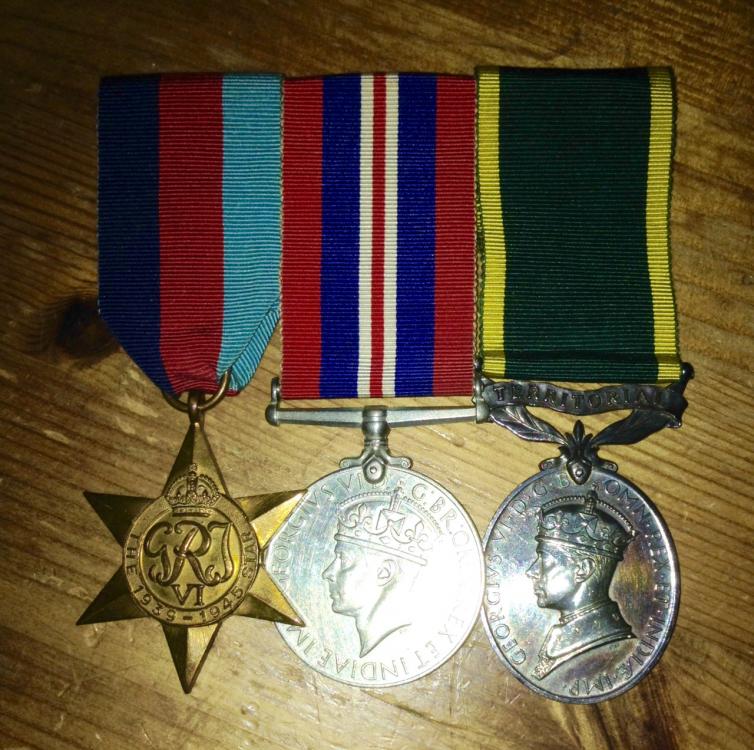
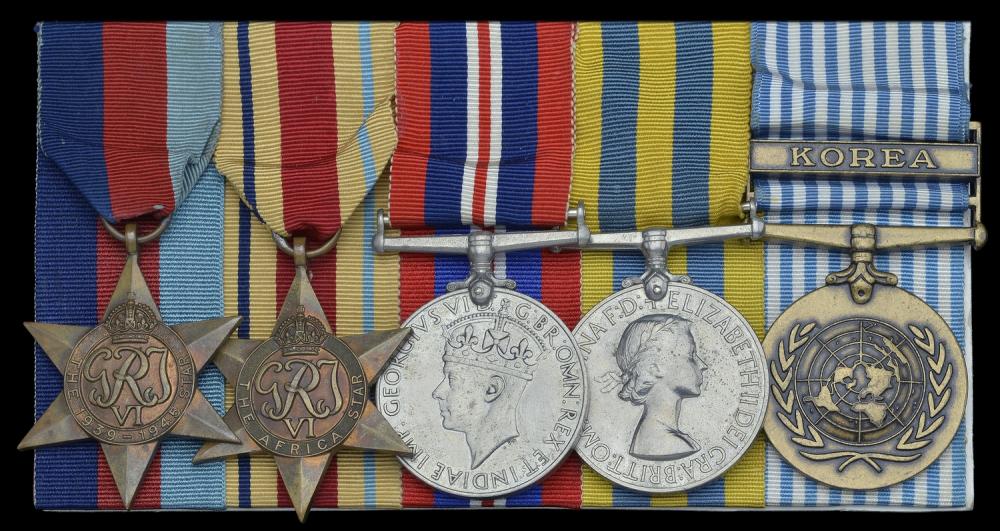
.jpg.fe7125cfb8fc3cbbb5d45eb42c62cbf7.jpg)
.jpg.ed57494c5662fc0b5ef50a0859d1a1bc.jpg)
.jpg.c3ae3ba6370c8e7f8c7d3f404325fed6.jpg)
.jpg.a0ac40af36558964ca7028f06d0f0133.jpg)
.jpg.40b5aa359e9f8a829b1a4f34072ce257.jpg)
.jpg.08d6d44e0cf1867ff2ba1d1f2683f5b4.jpg)

.jpg.86ea54e88a2d3e8991764dc75ef97fa5.jpg)
.jpg.1808616a438316f6950835f811efff44.jpg)

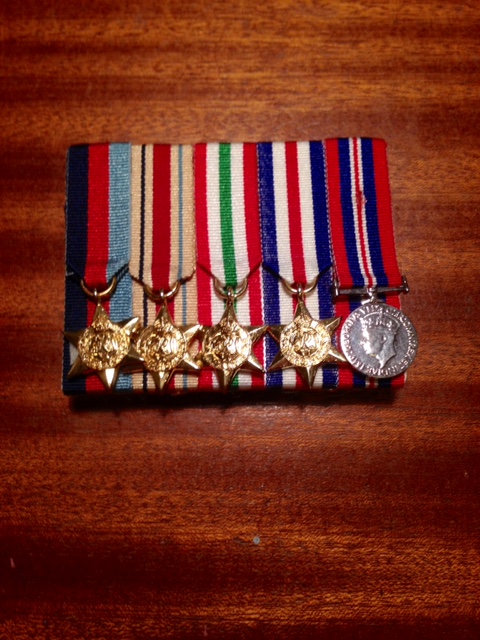



.jpg.0128e56ca6ad8cb6d61de25b507e5d27.jpg)
.jpg.8d01913e0a5fe6940976ae2cf66be877.jpg)
.jpg.85b316e76049dcdc3a6fa4414109fb3d.jpg)
.jpg.6877fc340de10f6a834036360fde795d.jpg)
.jpg.9aa26f22a6f2a234ec1b5ef1aaddb7bc.jpg)
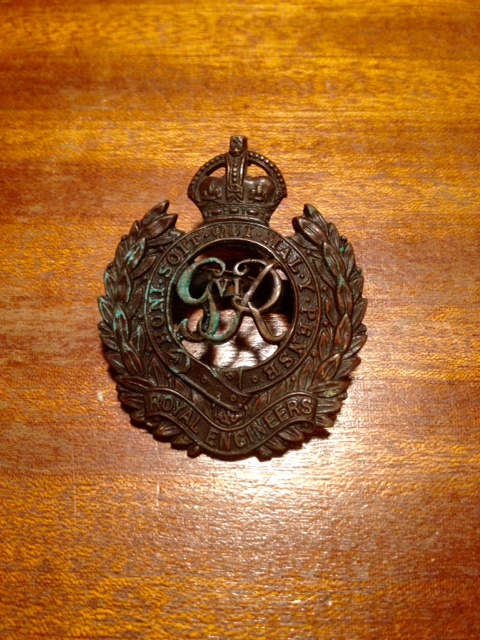
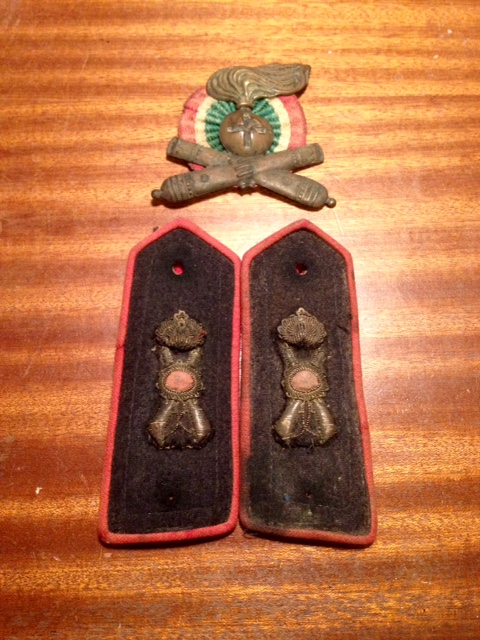
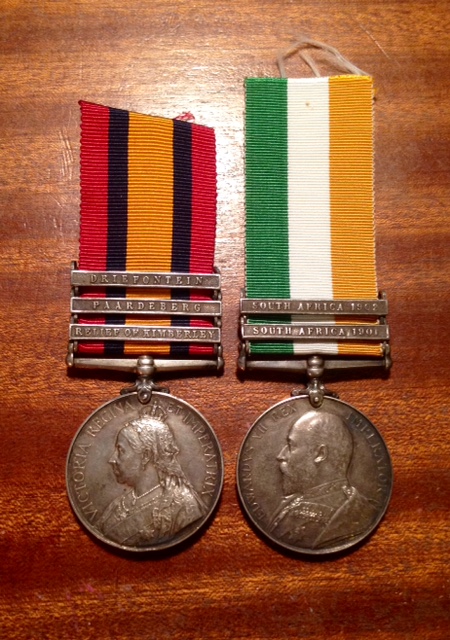

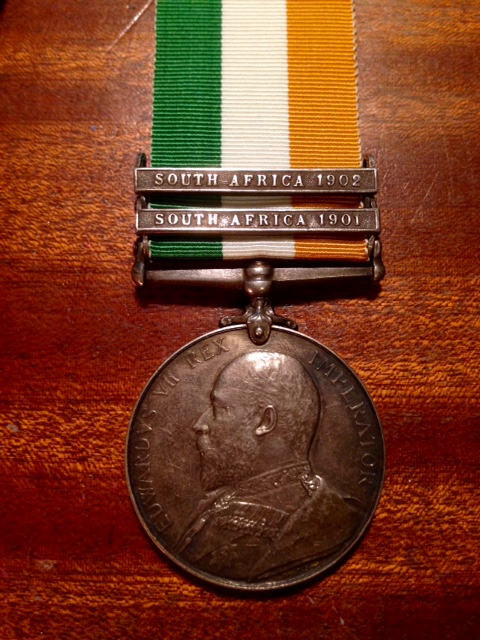

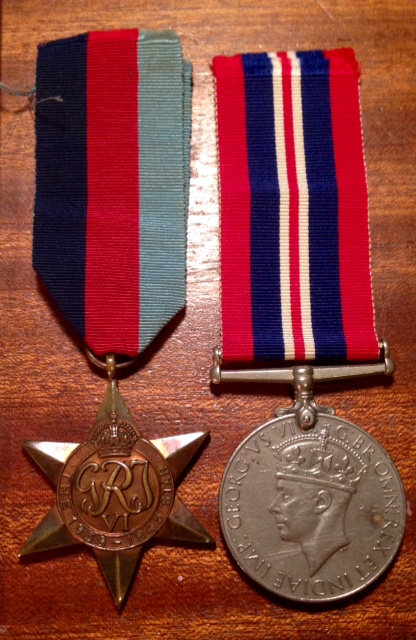
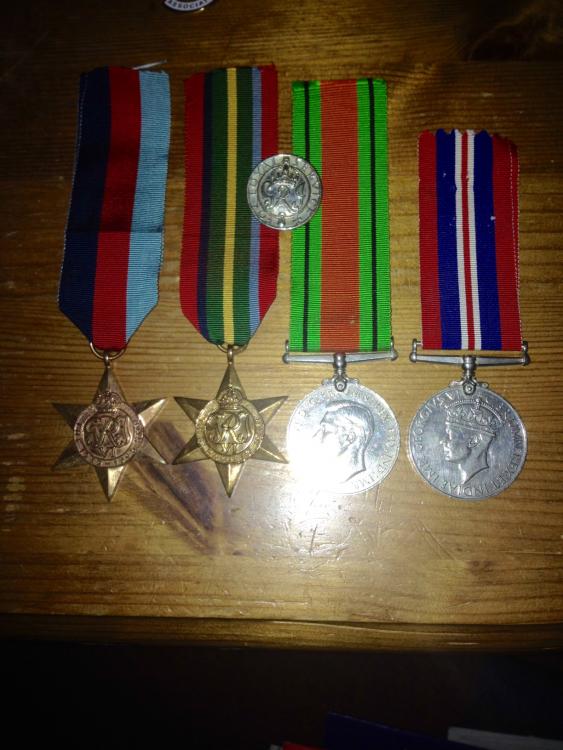
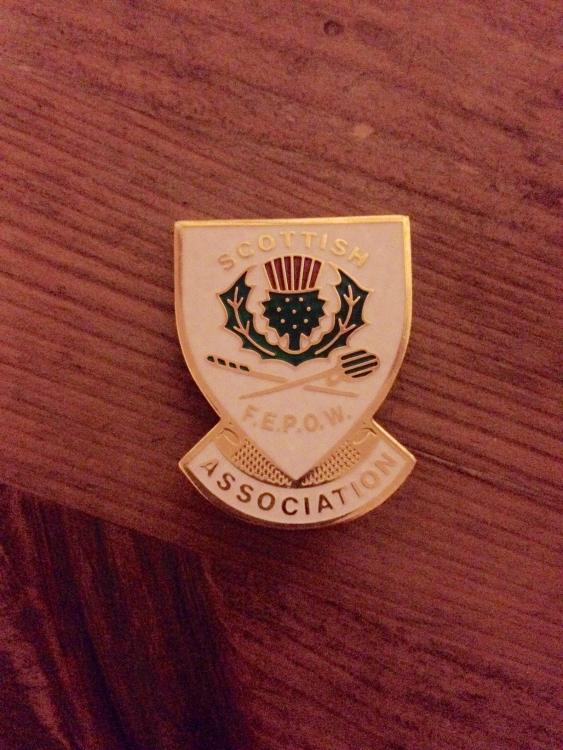
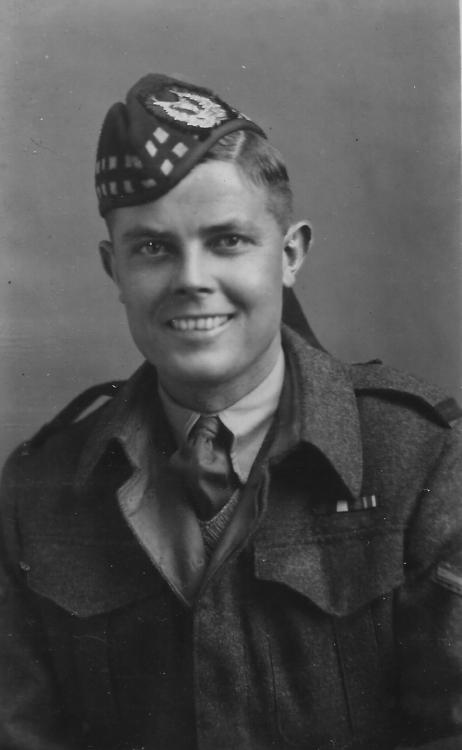
.thumb.jpg.27b3785b9ed7b14f7f0b60980cb0e21b.jpg)
